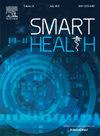A novel convolutional interpretability model for pixel-level interpretation of medical image classification through fusion of machine learning and fuzzy logic
Q2 Health Professions
引用次数: 0
Abstract
Artificial intelligence (AI) models for medical image analysis have achieved high diagnostic performance, but they often lack interpretability, limiting their clinical adoption. Existing methods can explain predictions at the image level, but they cannot provide pixel-level insights. This study proposes a novel fusion of machine learning and fuzzy logic to develop an interpretable model that can precisely identify discriminative image regions driving diagnostic decisions and generate heatmap visualization. The model is trained and evaluated on a dataset of CT scans containing healthy and diseased organ images. Quantitative features are extracted across pixels and normalized into representation matrices using a machine learning model. Subsequently, the contribution of each detected lesion to the overall prediction is quantified using fuzzy logic. Organ segment weighted averages are computed to identify significant lesions. The model explains application of AI in medical imaging with an unprecedented level of detail. It can explain fine-grained image areas that have the greatest influence on diagnostic outcomes by mapping raw image pixels to fuzzy membership concepts. Lesions are found with effect sizes and statistical significance (p < 0.05).
Our model outperforms three existing methods in terms of interpretability and diagnostic accuracy by 10–15%, while maintaining computational efficiency. By disclosing crucial image evidence that supports AI decisions, this interpretable model improves transparency and clinician trust. Ethical implications of integrating AI in clinical settings are discussed, and future research directions are outlined. This study significantly advances the development of safe and interpretable AI for enhancing patient care through imaging analytics.
一种融合机器学习和模糊逻辑的医学图像分类像素级解释卷积可解释性模型
用于医学图像分析的人工智能(AI)模型已经取得了很高的诊断性能,但它们往往缺乏可解释性,限制了它们的临床应用。现有的方法可以在图像级别解释预测,但它们不能提供像素级别的洞察力。本研究提出了一种新的机器学习和模糊逻辑的融合,以开发一个可解释的模型,该模型可以精确识别驱动诊断决策的判别图像区域,并生成热图可视化。该模型在包含健康和病变器官图像的CT扫描数据集上进行训练和评估。通过机器学习模型提取像素间的定量特征,并将其归一化为表示矩阵。随后,使用模糊逻辑对每个检测到的病变对整体预测的贡献进行量化。计算器官节段加权平均值以识别重要病变。该模型以前所未有的详细程度解释了人工智能在医学成像中的应用。它可以通过将原始图像像素映射到模糊隶属度概念来解释对诊断结果影响最大的细粒度图像区域。发现病变具有效应量和统计学意义(p <;0.05)。我们的模型在保持计算效率的同时,在可解释性和诊断准确性方面优于现有的三种方法10-15%。通过披露支持人工智能决策的关键图像证据,这种可解释的模型提高了透明度和临床医生的信任。讨论了在临床环境中整合人工智能的伦理意义,并概述了未来的研究方向。这项研究极大地推动了安全、可解释的人工智能的发展,通过成像分析来加强患者护理。
本文章由计算机程序翻译,如有差异,请以英文原文为准。
求助全文
约1分钟内获得全文
求助全文

 求助内容:
求助内容: 应助结果提醒方式:
应助结果提醒方式:


